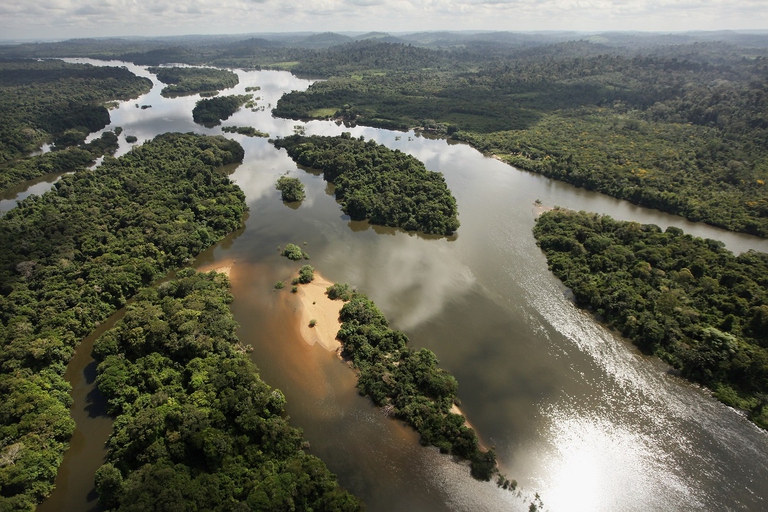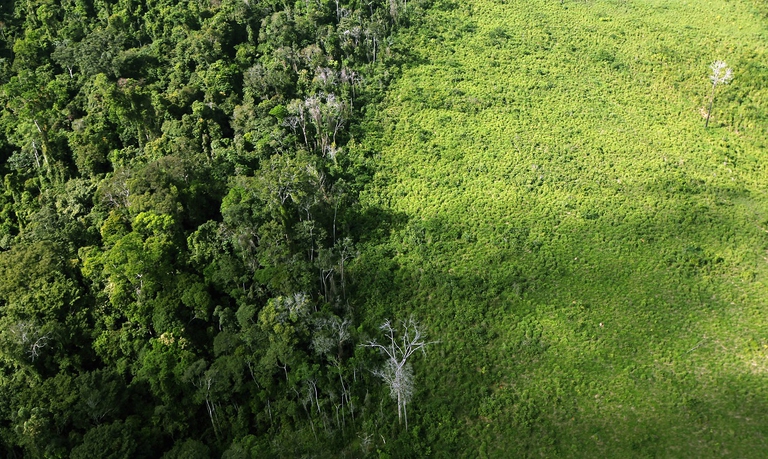
The Amazon became an alternative classroom during the pandemic. Now, the educational forest in Batraja, Bolivia, lives on to teach children and adults the value of nature.
A great Amazon reforestation project has been agreed in Brazil, the largest in history. Will it endure the victory of Jair Bolsonaro’s far-right politics in the presidential election?
The conditions of the Amazon rainforest, one of the planet’s last remaining lungs, are getting worse as it is being stripped and violated. Recently deforestation reached an all-time high: research by the Brazilian Space Research Institute shows that 8,000 square kilometres were razed by loggers and farmers between August 2015 and July 2016. In order to save the vastest tropical rainforest in the world as well as ourselves, US-based NGO Conservation International announced a new project that involves planting 73 million trees in the next six years, the largest reforestation operation in history.
The initiative would be guided by the NGO and involve the Brazilian Environment Ministry, Global Environment Facility (GEF), World Bank, Brazilian Biodiversity Fund and Rock in Rio festival. It’s aim is to make the “arc of deforestation”, an area in which around half of tropical deforestation has taken place, green again.
This vast surface that traverses the Brazilian states of Amazonas, Acre, Parà and Rondonia has been subjected to violent deforestation and thousands of hectares of rainforest have been destroyed to make space for livestock pastures. The first phase of the project would involve the recovery of 70,000 hectares of rainforest (equivalent to 30,000 football fields).
Read more: The Brazilian Amazon has been saved from commercial mining
“If the world is to hit the 1.5 degrees or 2 degrees target that we all agreed to in Paris, then protecting tropical forests in particular has to be a big part of that,” M. Sanjayan, CEO of Conservation International, stated. “It’s not just the trees that matter, but what kind of trees: if you’re really thinking about getting carbon dioxide out of atmosphere, then tropical forests are the ones that end up mattering the most”.
It is estimated that if deforestation ceased, forests would be able to absorb 37 per cent of annual CO2 emissions on globally, but biologists fear that 20 per cent of the Amazon rainforest could be deforested over the next two decades, in addition to the 20 per cent that was razed to the ground in the last forty years.
Read more: We have 12 years to avoid a climate catastrophe
Conservation International will use a new and efficient planting technique for this project; it was developed in Brazil just a few years ago and is called muvuca, a Portuguese word used to describe many people in a small space. Muvuca entails the planting of hundreds of native trees species in every square metre of deforested soil. Natural selection then allows the most appropriate plants to survive and prosper. A study by FAO shows that more than 90 per cent of native trees planted using the muvuca method germinate and are able to survive periods of drought up to six months.
“With plant-by-plant reforestation techniques, you get a typical density of about 160 plants per hectare – Rodrigo Medeiros, vice-president of Conservation International Brazil, explains –. With muvuca, the initial outcome is 2,500 species per hectare. And after ten years, you can reach 5,000 trees per hectare. It’s much more diverse, much more dense and less expensive than traditional techniques”.
The entire virtuous process of protecting the Amazon could be endangered by the election of the new Brazilian president Jair Bolsonaro in the second round of voting on the 28th of October. The far-right leader of the largest South American democracy has declared that his country won’t follow in Donald Trump’s footsteps by pulling out of the Paris Agreement on climate change. But only on the condition that the government in Brasilia has full sovereignty over rainforest management. The new president declared that he wants to see “guarantees on paper” on this matter. Otherwise we might have to consider a shocking goodbye.
Read more: Who is Jair Bolsonaro, the former military officer who has become Brazil’s new president
Bolsonaro also has the Triple A project in his sights: a hypothetical transversal ecological corridor from the Andes to the Atlantic Ocean to the Amazon. It would entail the creation of a vast protected area that would connect natural parks, indigenous reserves and biodiversity conservation areas. According to the new president, however, “136 million hectares would no longer be under our jurisdiction”. The Brazilian far-right considers the forest an economic resource rather than a vital element to save the planet from a climatic disaster, which could put the project to reforest vast areas of the Amazon, and all of us, at risk.
Siamo anche su WhatsApp. Segui il canale ufficiale LifeGate per restare aggiornata, aggiornato sulle ultime notizie e sulle nostre attività.
![]()
Quest'opera è distribuita con Licenza Creative Commons Attribuzione - Non commerciale - Non opere derivate 4.0 Internazionale.
The Amazon became an alternative classroom during the pandemic. Now, the educational forest in Batraja, Bolivia, lives on to teach children and adults the value of nature.
Our species took its first steps in a world covered in trees. Today, forests offer us sustenance, shelter, and clean the air that we breathe.
Bangladesh suffered widespread damage as a result of Cyclone Amphan. Yet the Sundarbans mangrove forest acted as a natural barrier protecting the country from further destruction, as it has done countless times before.
On top of a 2.4 million dollar compensation, the indigenous Ashaninka people will receive an official apology from the companies who deforested their lands in the 1980s.
The tapir was reintroduced into Brazil’s Atlantic Forest, the country’s most at-risk ecosystem. The species can play a key role in the forest’s recovery.
Forests are home to 80 per cent of the world’s terrestrial biodiversity. This year’s International Day of Forests highlights the urgent changes needed to save them.
After a legal battle that lasted two years, Indonesia’s Supreme Court has revoked the permit to mine for coal in the forests of South Kalimantan in Borneo.
The list of human and animal victims of the Australia wildfires keeps growing – one species might already have gone extinct – as the smoke even reaches South America.
Areas where the FARC guerrilla used to hold power in Colombia have faced record deforestation. Farmers cut down trees, burn land and plant grass for cows. Because, “what else can we do for a living here in the Colombian Amazon”? An intimate report from the heart of the felled forest in Caquetá.










